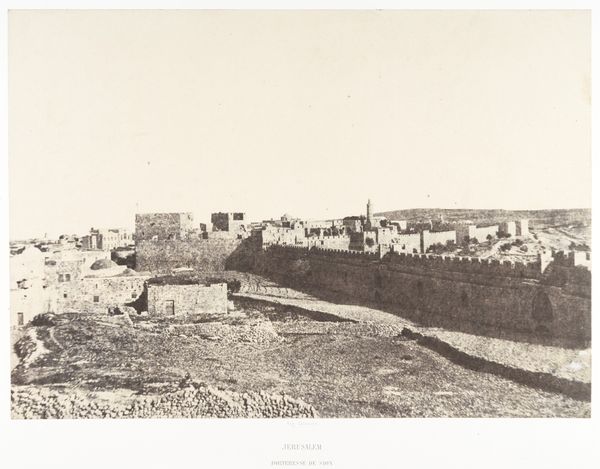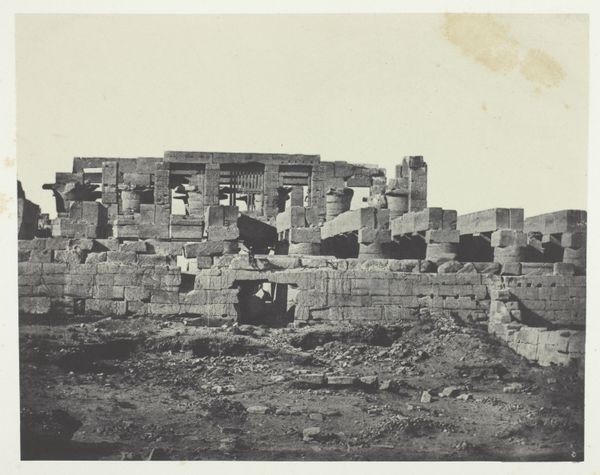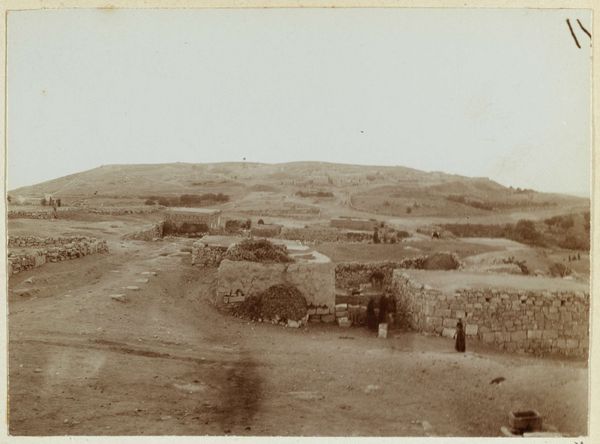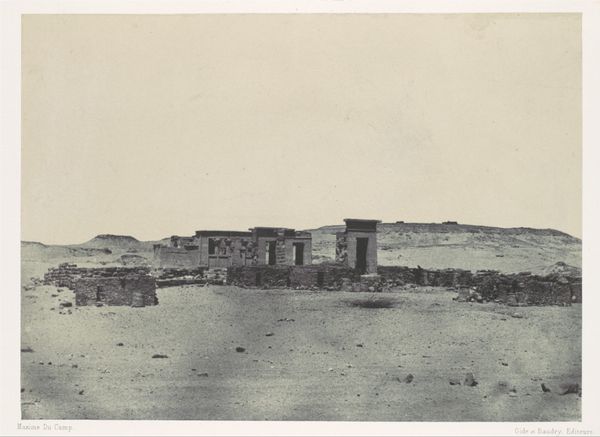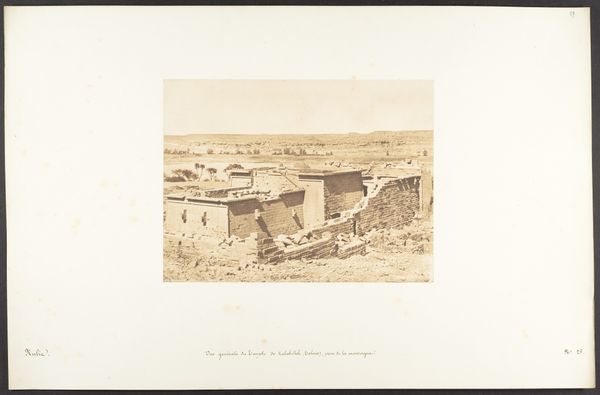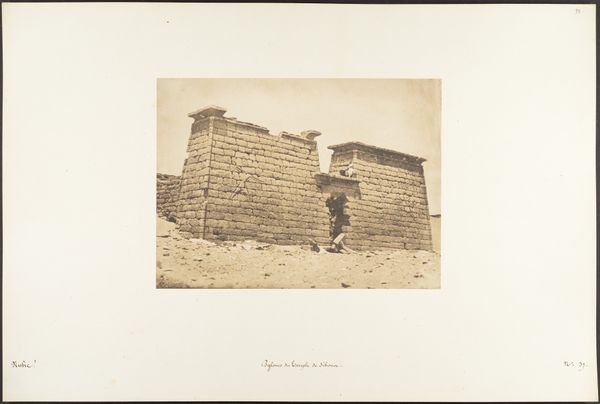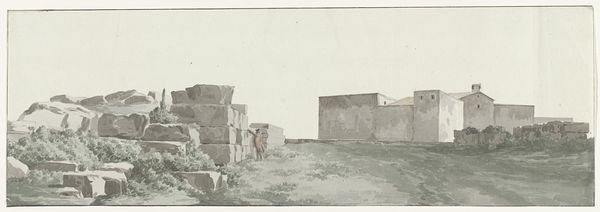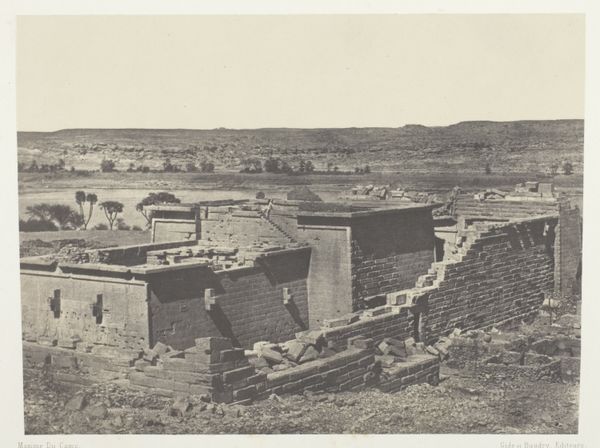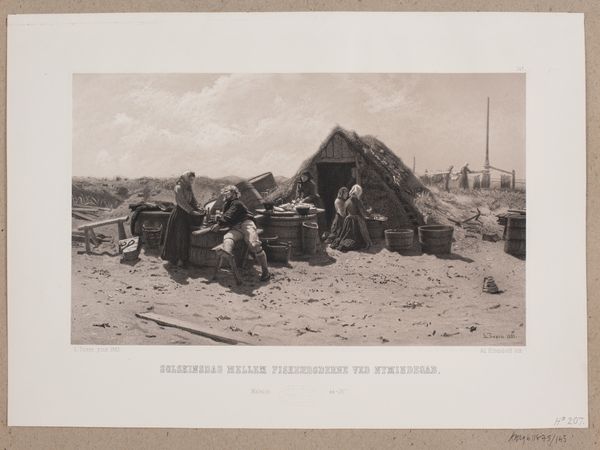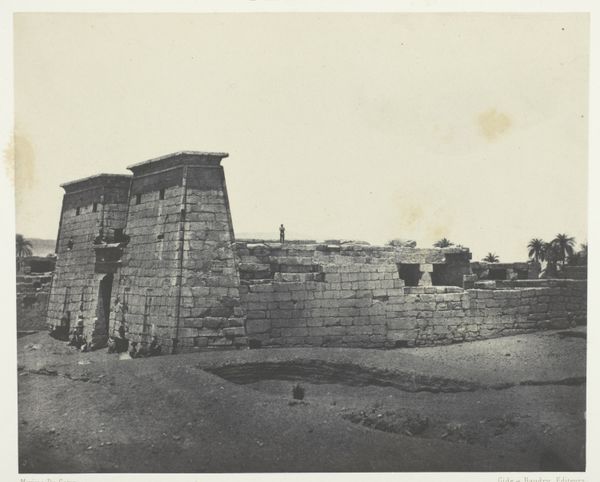
photography, albumen-print
#
landscape
#
photography
#
orientalism
#
albumen-print
Dimensions: height 81 mm, width 109 mm
Copyright: Rijks Museum: Open Domain
Editor: This is a photograph from 1898, titled "Bedouin Tent between Umm Qais in Jordan and Samakh in Israel" by Johannes Lodewijk Heldring. It looks like an albumen print. I am really struck by how stark the landscape seems; the tent almost looks temporary. What do you make of this piece? Curator: I see here an example of how photography served to frame and document particular cultural encounters through a lens of orientalism. The albumen print, as a material, was central to disseminating these constructed visions of the “exotic” East to European audiences. Editor: So you're suggesting that even the materials themselves, like the specific photographic process, played a role in shaping the view? Curator: Absolutely. Consider the albumen print's chemical process: layers of egg white creating that sepia tone, requiring specialized labor to prepare and print. It implies a specific mode of production, destined for collection and display. This elevates it beyond simple documentation. How does the photographer portray labour of the Bedouins within the photograph itself? Editor: It’s hard to say. They're mostly obscured within the shadows of the tent. It seems more focused on the tent itself as a cultural artifact. Curator: Precisely. It shifts our focus from the people, and toward their temporary architecture, framed against the solid stonework in the background. It’s a juxtaposition of nomadic existence versus permanent structure that says a lot about how the West categorized and perceived the ‘other.’ We must remember whose vision is presented and how was it circulated through commodities and global trade. Editor: That’s a powerful way to look at it. I was initially drawn to the visual aspect, but now I'm seeing how the materials and the methods were crucial to how this image functioned culturally. Curator: Yes, understanding the historical methods illuminates much more than what’s immediately apparent within the picture itself. The photo's purpose depended so much on how and why it was made.
Comments
No comments
Be the first to comment and join the conversation on the ultimate creative platform.

